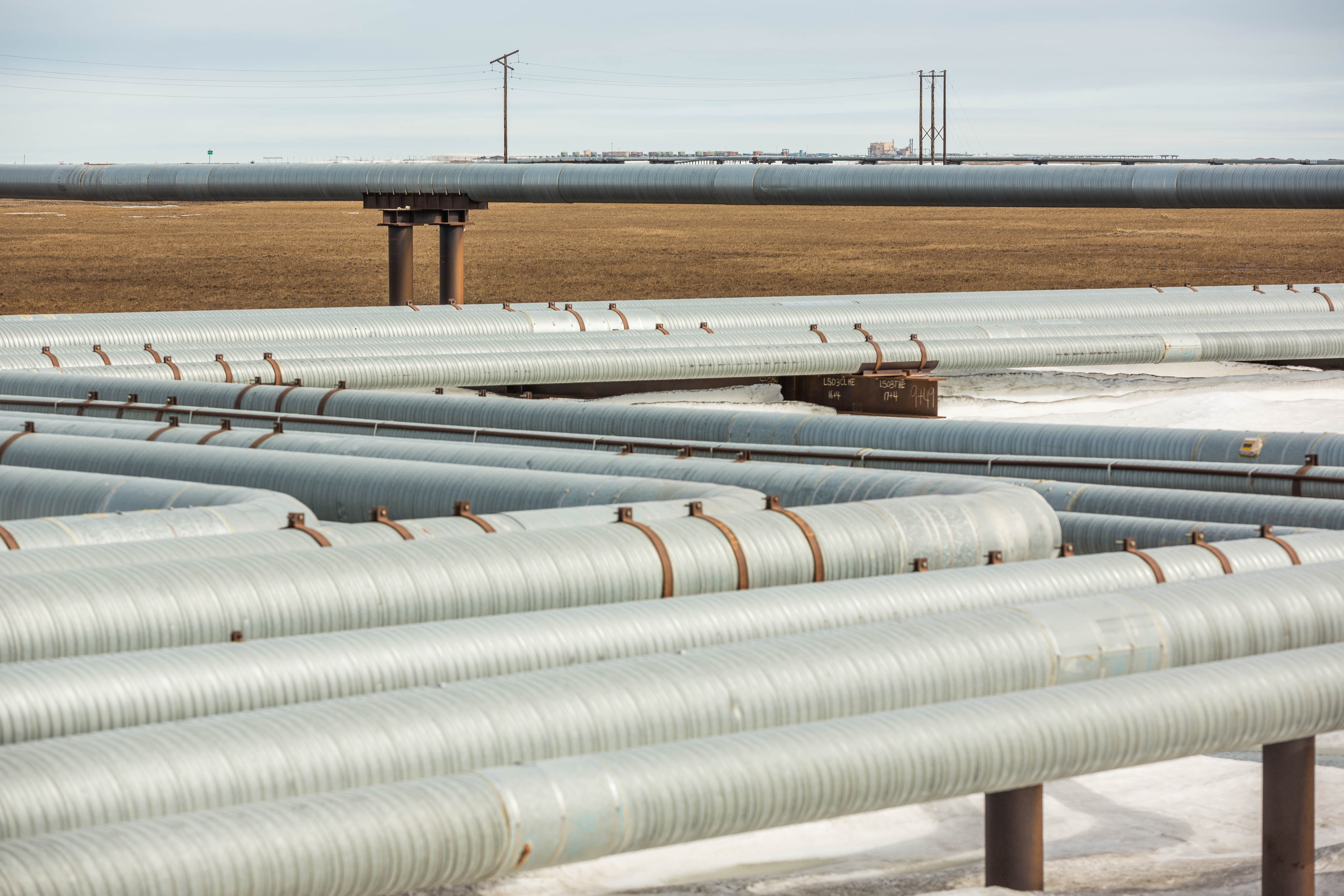On Alaska’s North Slope, exploration companies eye new oil prospects likely to require fracking

One oil explorer seeking its fortune in the source rocks for Prudhoe Bay is moving ahead with plans to drill a test well this winter, while another may have to put off drilling this winter during a tough economic time for the industry.
If they’re as successful as they hope, the prospectors will spark a new hunt for oil from shale using hydraulic fracturing in the fields south of Prudhoe Bay, applying the same fracking technology that has revolutionized oil production in the Lower 48.
But the independent companies — Accumulate Energy Alaska and Great Bear Petroleum — are also hoping to tap into easier-to-flow, conventional pools of oil. They won’t be the giant pools Alaska is known for, such as at Prudhoe Bay, but they could boost oil moving through the trans-Alaska pipeline and support the companies’ more ambitious efforts to crack open shale rocks for oil.
Accumulate, a subsidiary of Australia-based 88 Energy, recently announced that it holds leases to five “large conventional leads” of oil near the Dalton Highway and south of Prudhoe that could produce 760 million barrels of oil, based on its own estimates.
The company, calling its prospect Project Icewine, also announced in April that it’s sitting on 985 million barrels of recoverable unconventional oil, based on findings from third-party engineering firm DeGolyer and MacNaughton.
If correct, Icewine would pale in size to fields like Prudhoe Bay or Kuparuk River but would still rank among the larger North Slope discoveries.
After completing an exploration well early this year, Accumulate Energy is now asking the state to approve plans to drill another well to conduct more exploration and test well-flow rates, on an existing gravel pad near the Dalton Highway 40 miles south of Deadhorse. The company is operator of state leases extending across 270,000 acres.
Erik Opstad, general manager in Alaska for Accumulate, said the well will give the company an initial look at the potential viability of the prospect but will not provide a final answer on whether development could proceed. More data would help answer that question.
“We’d be looking to additional wells to further enhance our understanding of the reservoir,” he said.
The company’s plan calls for work at the existing Franklin Bluffs gravel pad to begin on Jan. 1, with a well bore extending about two miles deep. Exploration drilling is expected to begin in March, with resource stimulation by hydraulic fracking and flow testing starting in mid-April and extending a month.
“Drilling into hydrocarbon-bearing zones will occur before April 27,” the plan says.
Continued drilling and testing may occur next winter from the same well, according to the exploration plan.
Opstad said the oil play offers an “unexploited resource,” primarily because the North Slope oil industry has long sought discoveries in the larger, potentially less costly conventional fields around Prudhoe Bay.
The shale rocks the companies are exploring are believed by experts to be the source for the oil at Prudhoe and other large, conventional North Slope fields.
Since 2012, Great Bear Petroleum has drilled three wells in another unconventional prospect south of Prudhoe Bay. Great Bear is operator on 570,000 acres of leases near the Dalton Highway and north of the Icewine field.
Pat Galvin, chief commercial officer for Great Bear and a former state revenue commissioner, said the area has been “very much underexplored.”
Advancements in horizontal drilling and hydraulic fracturing — allowing companies to tap oil from challenging reservoirs — have sparked interest in the area in recent years.
Great Bear is also hunting for conventional pools of oil to support its shale-extraction efforts. Reviewing seismic data, it has identified nine potential geological traps that may contain oil.
A nearby well drilled by an earlier explorer in 1989 contained shows of oil associated with five of those potential traps, giving the company additional confidence that the traps might hold oil.
Because portions of some traps are stacked above others, a single well can be drilled to access multiple prospects, he said.
But that isn’t expected to happen this year.
Low oil prices and uncertainty over the state’s tax credits have made it difficult to find lenders to help support the projects, Galvin said. The company doesn’t expect to have the money it needs to drill this year.
Great Bear is owed about $40 million from the state after Gov. Bill Walker in June said he would defer payment of $430 million in tax credits to help resolve Alaska’s huge revenue shortfall.
Walker is expected to propose measures in the upcoming legislative session starting in January to address tax credits awarded on the North Slope, potentially reducing state support for exploration.
The lack of payment and potential changes to taxes have generated concern among lenders, Galvin said.
“Without the ability to borrow against the tax credits, it creates an additional hurdle to come up with front-end money that’s not readily available in this market,” Galvin said.
Stability in the state’s fiscal system and better market conditions will help the company move forward with its plans in the future, he said.